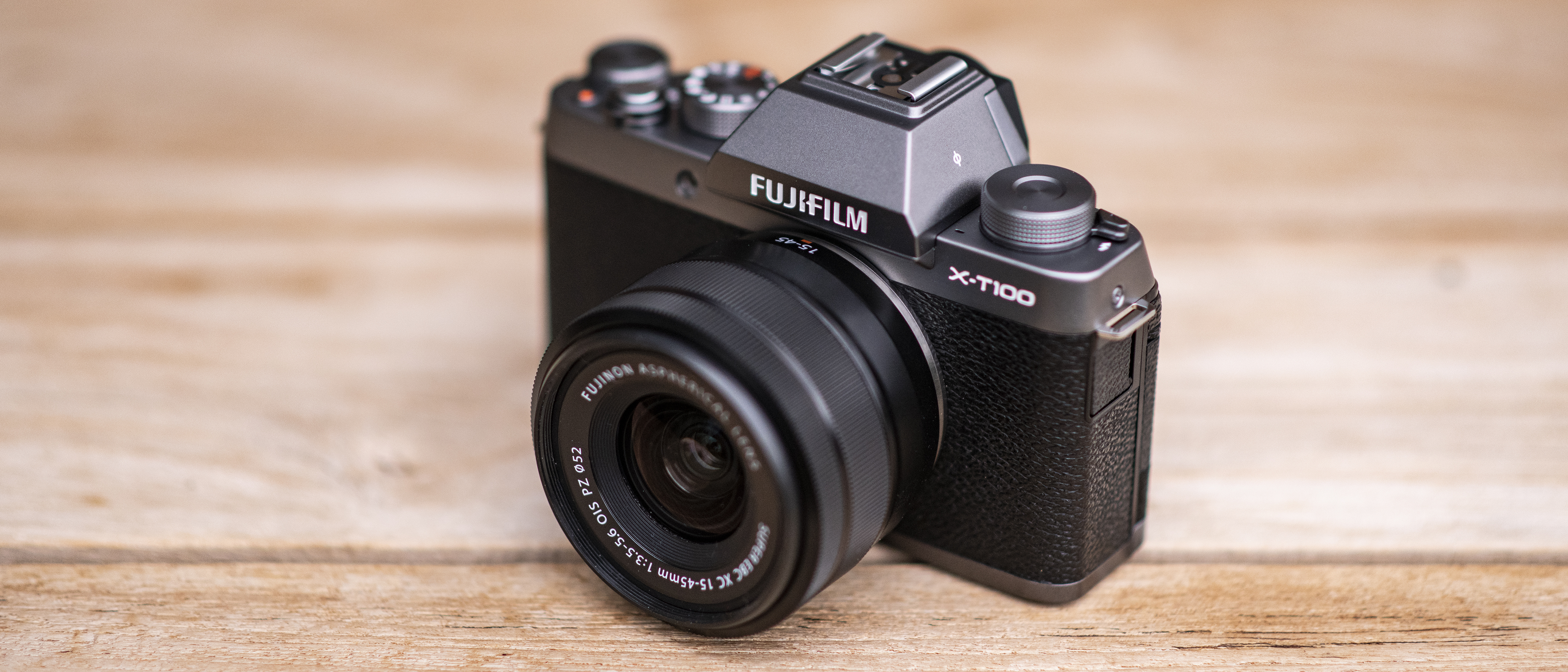Why you can trust TechRadar
Build and handling
- Features an anodized aluminum top cover
- Detachable grip essential for most
- Streamlined but logical control layout
The Fujifilm X-T100 features a similar aesthetic to other X-T models in the Fujifilm range, but is perhaps most closely related to the X-T20, although while the X-T20 features magnesium top and bottom plates the X-T100 makes do with an anodized aluminum top cover in a choice of dark silver, black and champagne gold finishes.
It might sit at the lower end of the Fujifilm range, but compared to the plasticky X-A5 the X-T100 has a much more premium finish. It actually weighs more than the X-T20, tipping the scales at 448g, compared to the X-T20's 383g – this can perhaps be attributed to the X-T100's more sophisticated hinge mechanism for the rear display.
It's certainly more streamlined though, with the X-T100 sacrificing the X-T20's comfy (if modest) handgrip. Thanks to the leatherette finish covering the majority of the body the grip is pretty good, but it's dramatically improved when you attach the bundled detachable grip, which screws into the side of the body.
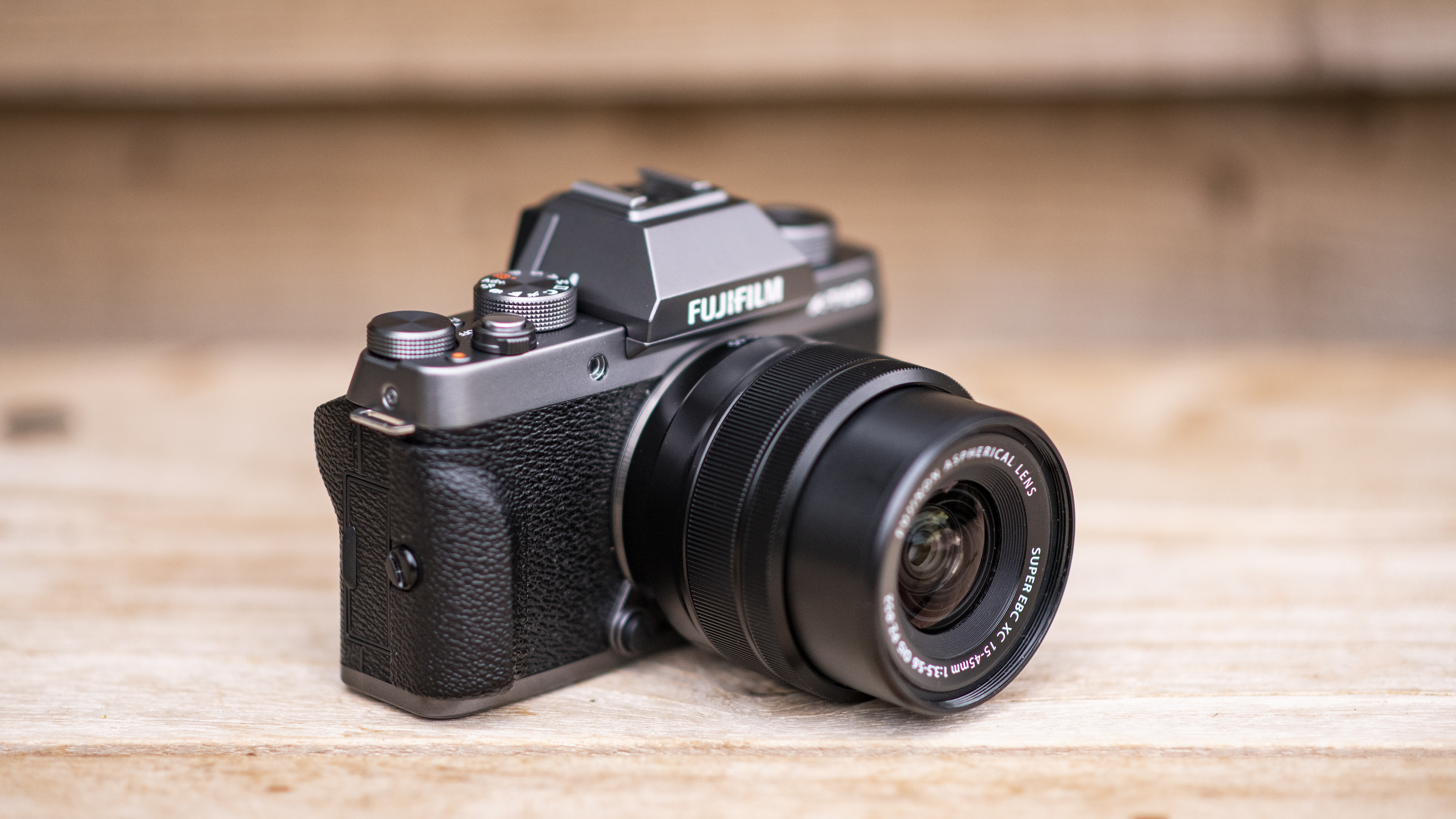
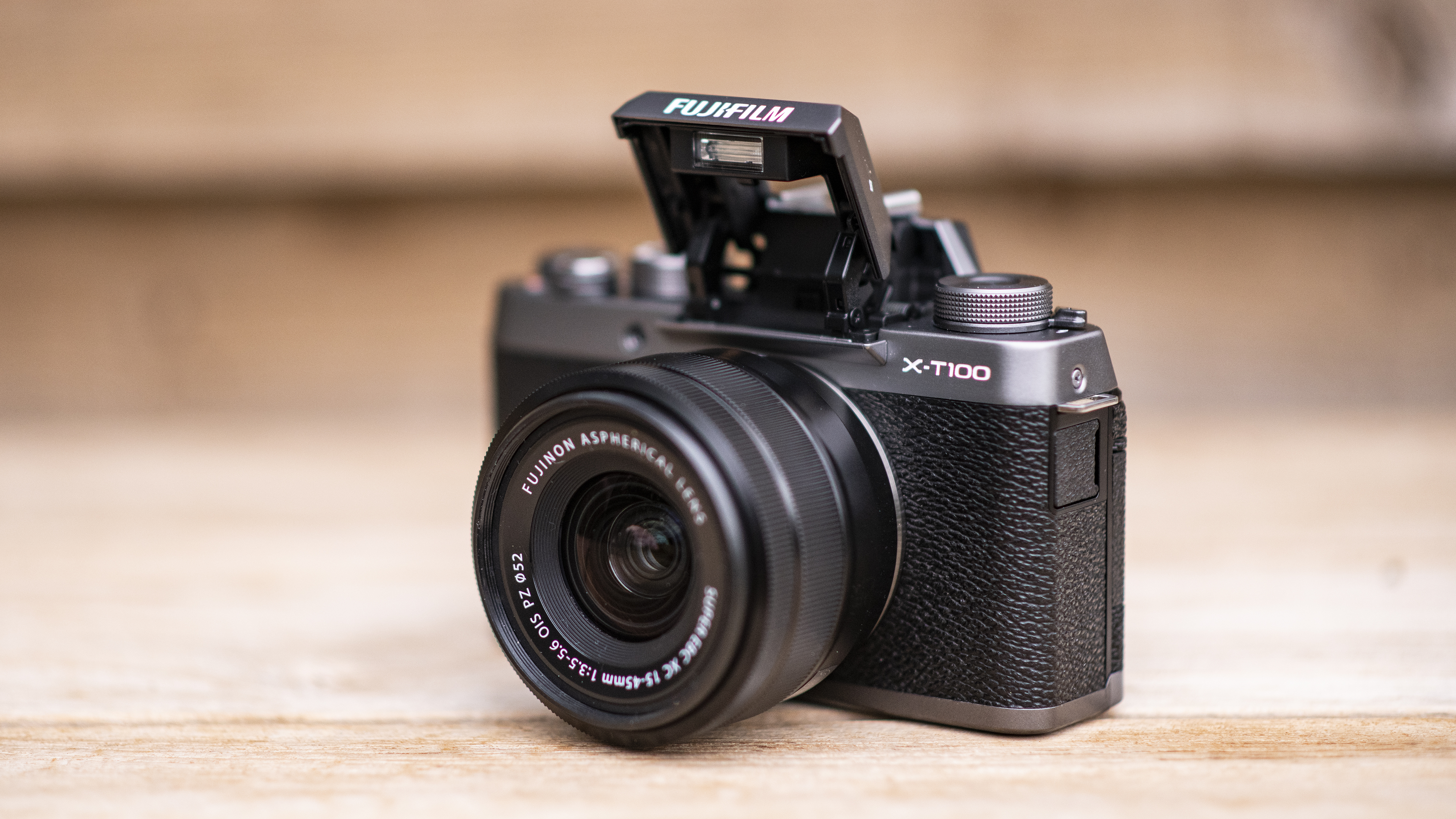
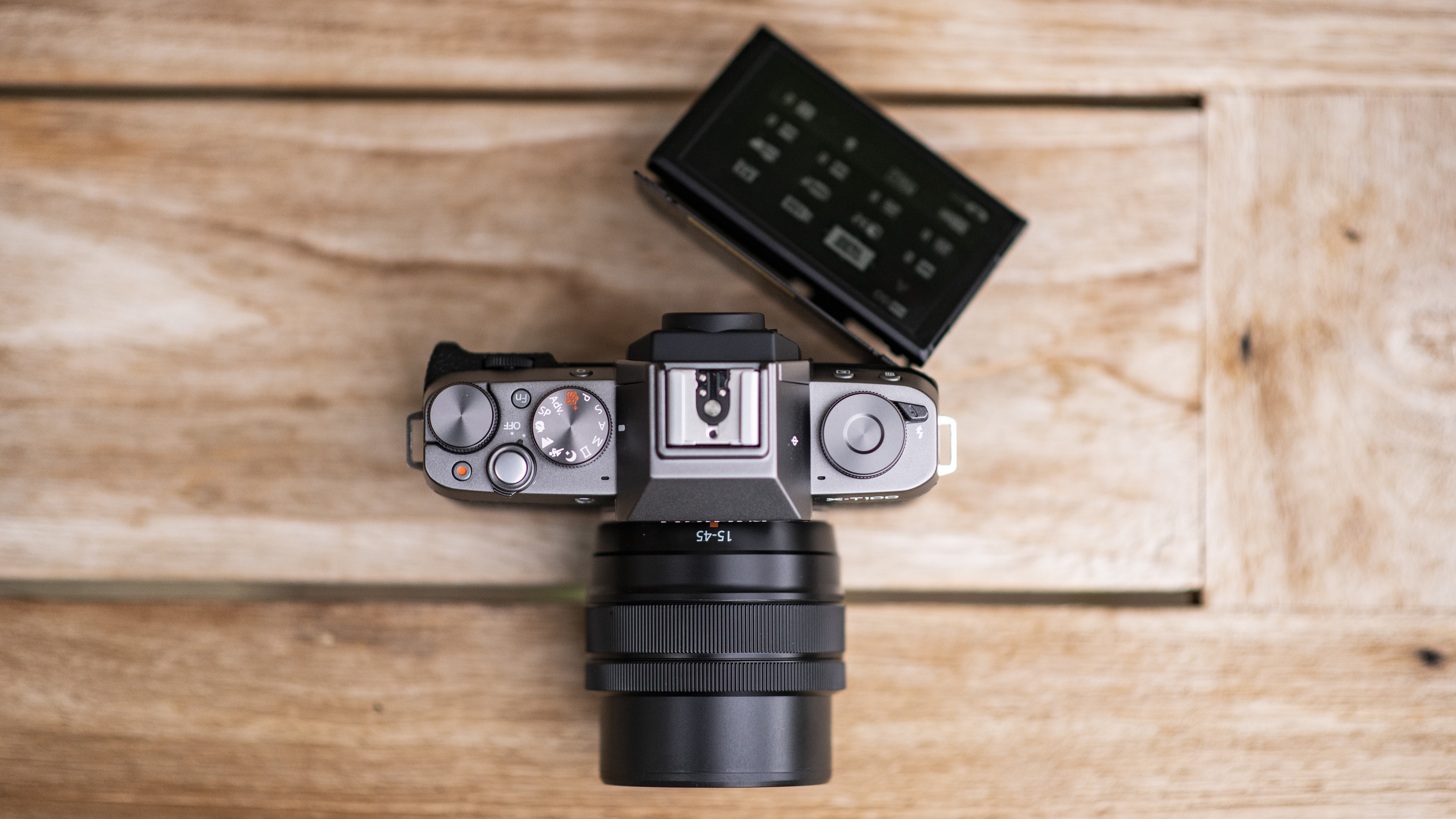
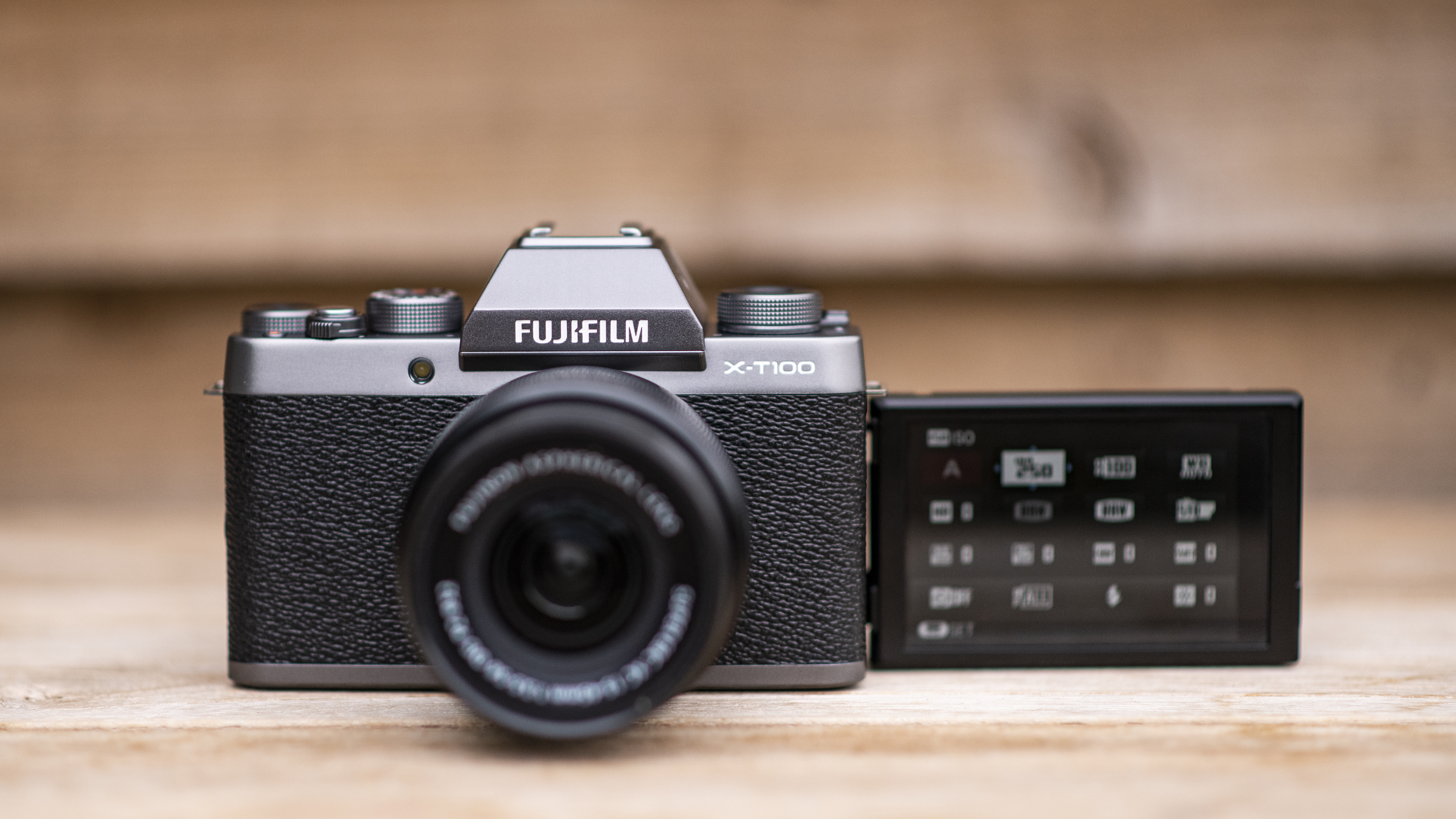
What about that three-way touchscreen? Maybe we're missing the point, but it just feels a little over-engineered. There's no denying that it enables a decent range of shooting positions, but if shooting selfies is a priority then you have to wonder if a simpler side-hinged design, like that on the Canon EOS M50, wouldn't have been a neater solution.
While the top plate of the X-T20 has dedicated shutter speed, drive mode and exposure dials, the X-T100 strips things back to make things a little less intimidating for new users.
In place of the shutter speed dial on the X-T20 is a shooting mode dial, while at either end of the top plate are two unmarked dials. Out of the box, if you're shooting in either aperture or shutter priority mode those parameters are controlled by the vertically mounted rear dial, while the right-hand top plate dial is set to control exposure compensation. The left-hand dial is set to scroll through the X-T100's Film Simulation modes.
However, if you're in full manual mode, the right-hand top plate dial will instead set shutter speed, while the rear dial controls aperture. If you're not fussed about Film Simulation modes, you can dive into the X-T100's menu and re-assign the left-hand top plate dial to control another setting. You can also customize the small function button (nestled on the top plate with a default setting to control ISO), as well as four swipe gestures on the touchscreen.
Returning to the menu for a moment, and compared to the higher-end X Series cameras it's a slightly dated design, although it's pretty easy to navigate.
Autofocus
- Capable 91-point phase-detect AF system
- Good coverage across the frame
- Focus speeds could be better
As the Fujifilm X-T100 is targeted towards the less experienced user it doesn't get quite the same advanced focusing system as the X-T20 or X-T2. That said, it does feature a capable 91-point phase-detection system that offers a variety of focus patterns.
These include Wide/Tracking, Zone AF and Single Point AF modes. Set the X-T100 to Wide/Tracking mode if you just want to point and shoot, as this will allow the camera to decide what to focus on, whereas Zone AF is a bit more specific, telling the camera roughly which area your subject is in. For complete control you'll want to opt for Single Point AF, which enables you to select one of the 91 AF points. Coverage is also pretty good, extending almost to the edge of the frame.
If you're in the Zone or Single Point AF modes you can also change the size of the focus zone/point with the rear control wheel, depending on how precise you want to be. There's also a handy eye-detection AF mode, which as the name suggests focuses on the eyes of portrait subjects.
What about focusing speed? Just as we found with the X-A5, which uses the same system, focusing speeds are good, but not the quickest around. The X-T100 will hunt for focus on occasion, while it doesn't have the luxury of the more advanced focus tracking modes that higher-end X Series cameras enjoy, so you shouldn't expect too much from the camera's focus tracking.
Current page: Build, handling and AF
Prev Page Introduction and key features Next Page Performance and image qualityPhil Hall is an experienced writer and editor having worked on some of the largest photography magazines in the UK, and now edit the photography channel of TechRadar, the UK's biggest tech website and one of the largest in the world. He has also worked on numerous commercial projects, including working with manufacturers like Nikon and Fujifilm on bespoke printed and online camera guides, as well as writing technique blogs and copy for the John Lewis Technology guide.
